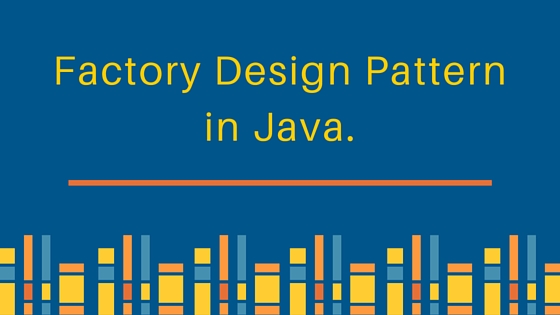原文链接
https://github.com/shellhub/blog/issues/22
前言
工厂设计模式(Factory Design Pattern)属于创建模式之一,工厂设计模式在JDK,Spring,Stuts被广泛使用
当一个类或者接口有多个子类,并且基于输入返回特定的子类,此时会使用工厂设计模式。这种模式负责从客户端到工厂类的实例化。
让我们首先学习如何在java中实现工厂设计模式,然后我们将研究工厂模式的优势,我们将在JDK中看到一些工厂设计模式的使用。请注意,此模式也称为工厂方法设计模式。
工厂设计模式: 超类
工厂设计模式中的超类可以是接口,抽象类或普通的java类。对于我们的工厂设计模式示例,我们使用带有重写的toString()方法的抽象超类进行测试。
package com.github.shellhub.model;
public abstract class Computer {
public abstract String getRAM();
public abstract String getHDD();
public abstract String getCPU();
@Override
public String toString(){
return "RAM= "+this.getRAM()+", HDD="+this.getHDD()+", CPU="+this.getCPU();
}
}
工厂设计模式: 子类
假设我们有两个子类PC和Server,具有以下实现。
PC.java
package com.github.shellhub.model;
public class PC extends Computer {
private String ram;
private String hdd;
private String cpu;
public PC(String ram, String hdd, String cpu){
this.ram=ram;
this.hdd=hdd;
this.cpu=cpu;
}
@Override
public String getRAM() {
return this.ram;
}
@Override
public String getHDD() {
return this.hdd;
}
@Override
public String getCPU() {
return this.cpu;
}
}
Server.java
package com.github.shellhub.model;
public class Server extends Computer {
private String ram;
private String hdd;
private String cpu;
public Server(String ram, String hdd, String cpu){
this.ram=ram;
this.hdd=hdd;
this.cpu=cpu;
}
@Override
public String getRAM() {
return this.ram;
}
@Override
public String getHDD() {
return this.hdd;
}
@Override
public String getCPU() {
return this.cpu;
}
}
工厂类
既然现在我们准备好了超类和子类,我们可以编写工厂类。以下是基本的实现。
package com.github.shellhub.factory;
import com.github.shellhub.model.Computer;
import com.github.shellhub.model.PC;
import com.github.shellhub.model.Server;
public class ComputerFactory {
public static Computer getComputer(String type, String ram, String hdd, String cpu) {
if ("PC".equalsIgnoreCase(type)) {
return new PC(ram, hdd, cpu);
} else if ("Server".equalsIgnoreCase(type)) {
return new Server(ram, hdd, cpu);
}
return null;
}
}
使用
这是一个简单的测试客户端程序,它使用上面的工厂设计模式实现。
package com.github.shellhub;
import com.github.shellhub.factory.ComputerFactory;
import com.github.shellhub.model.Computer;
public class TestFactory {
public static void main(String[] args) {
Computer pc = ComputerFactory.getComputer("pc", "2 GB", "500 GB", "2.4 GHz");
Computer server = ComputerFactory.getComputer("server", "16 GB", "1 TB", "2.9 GHz");
System.out.println("Factory PC Config::" + pc);
System.out.println("Factory Server Config::" + server);
}
}
Output:
Factory PC Config::RAM= 2 GB, HDD=500 GB, CPU=2.4 GHz
Factory Server Config::RAM= 16 GB, HDD=1 TB, CPU=2.9 GHz
工厂设计模式的优点
- 工厂设计模式提供了接口而不是实现的代码方法。
- 工厂模式从客户端代码中删除实际实现类的实例化。工厂模式使我们的代码更健壮,耦合更少,易于扩展。例如,我们可以轻松更改PC类实现,因为客户端程序不知道这一点。
- 工厂模式通过继承提供实现和客户端类之间的抽象。
工厂设计模式在JDK中的应用
-
java.util.Calendar,ResourceBundle和NumberFormat getInstanc()方法使用Factory模式。
- 包装类中的
valueOf()方法,如Boolean,Integer等。





